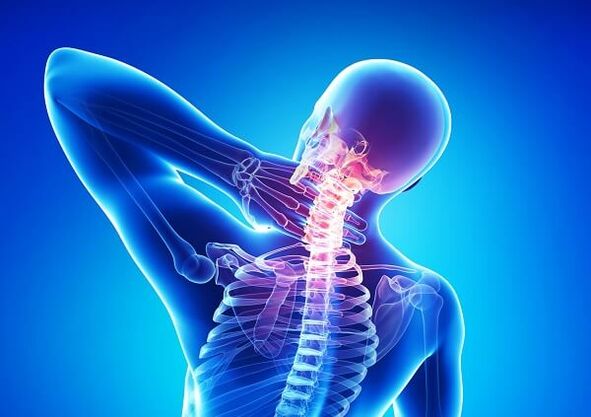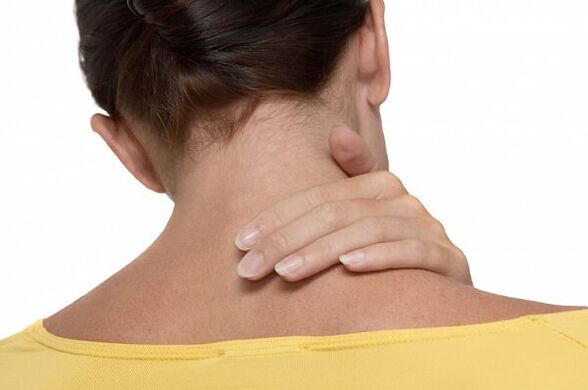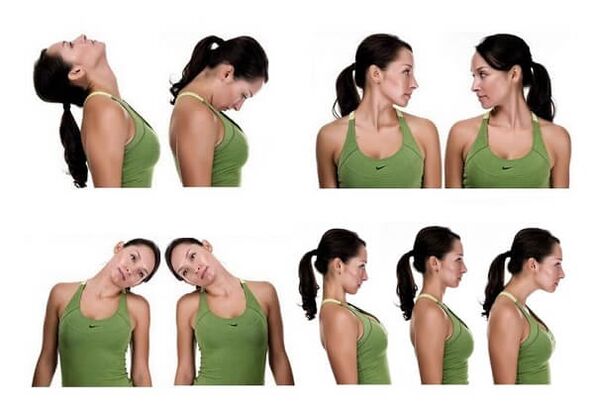
Cervical fibroids can be called one of the most common spinal diseases today. At the same time, according to statistics, it can be recorded that more and more young people are suffering from this degenerative disease, previously it was thought that osteoarthritis only occurred in older people. It is important to know about the symptoms of cervical osteosarcoma and to treat it at home, because the earlier the pathology is detected and treated, the less likely it is to develop complications.
Cervical spondylosis is a degenerative disease of the cervical spine in which the discs are destroyed. The pathology progresses quite slowly, but it should be noted that most degenerative changes are irreversible.
Stages of the disease
The following stages of cervical spondylosis are distinguished from the initial changes, which practically do not cause pain and other symptoms, to complete destruction of the disc:
- Preclinical stage. At this stage, there are no obvious signs of degenerative changes, they take place at the biochemical level. The patient does not feel pain or any other changes in his condition.
- Stage in which degenerative changes in the nucleus pulposus increase. The change of the nucleus pulposus leads to instability of the cervical spine, structural disorders of the intervertebral disc capsule. The patient begins to experience mild pain and other symptoms.
- The phase of complete destruction of the fibrosus annulus. There is a protrusion of the disc - the nucleus pulposus begins to expand beyond the destroyed annulus, displacement and displacement of the cervical vertebrae occur. Pain syndrome and other symptoms of the disease increase markedly.
- The tissue regeneration phase of the disc. The nucleus pulposus begins to be replaced by fibrous tissue, the tissues of the disc scar tissue and adjacent structures of the spine participate in the degenerative process. With the development of fibrosis of the disc, the pain and instability disappear, but the condition is by no means reversible.
Important!Periodically, exacerbations of the disease may occur with increased symptoms, usually after increased exercise.
The sooner treatment is started, the easier it is to suspend degenerative changes. At the same time, the clinical manifestations of cervical fibroids also vary in diversity, often unable to diagnose the disease without adequate diagnosis, X-ray, MRI or CT.
The symptoms
The main difficulty in identifying cervical osteonecrosis is that the symptoms are incomplete and unclear. In addition to pain syndrome, there are many vegetative symptoms that can indicate diseases of the nervous or circulatory system, therefore, people often arrive at the identification of osteonecrosis through misdiagnoses.
Symptoms of incontinence in men are generally considered less severe than pain. Perhaps this is because men are less likely to go to the doctor with symptoms of neuropathy. In women, self-control symptoms related to the emotional sphere were considered more pronounced.
In general, the following symptoms are commonly referred to as the main symptoms of cervical osteochondrosis and they must all be present at the same time:
- Pain syndrome. The pain appears in the neck and shoulders, spreading down the shoulder blades. It can also spread to the back of the head. In addition, with osteonecrosis, headache and dizziness may occur.
- Vegetative symptoms. Because the nerve endings and blood vessels in the cervical spine are compressed, arising in the cervical spine. Headache, dizziness, nausea, palpitations, symptoms similar to a panic attack occur.
- Feeling numb, limited movement in the upper extremities, shoulder blades. This symptom also occurs because the nerve endings in the cervical spine are compressed.
These are the main symptoms that occur in cervical osteochondrosis, often the pain syndrome is so weak that the cause of the discomfort begins to be searched in the field of neurology.

How to cure warts at home
Home treatment for fibroids can be done in the early stages of the disease. Treatment should be comprehensive, including pain medication, therapeutic exercises, massage, and other procedures. Each component of the therapy is necessary for full recovery.
Medicine
Pain medication is often required, starting with a non-steroidal OTC medication. If such drugs do not help, they must use blockade measures - inject anesthetic into the lesion site.
Topical corticosteroid ointments may also be used. Care must be taken with their use, because if used inappropriately, they can be harmful. These funds are prescribed strictly by prescription; their own use is prohibited.
In addition, with severe vegetative symptoms, it is possible to use means to improve the blood supply to the brain. They are prescribed on rare occasions. Sometimes, in addition to them, daytime sedatives are used, which help to prevent depressive symptoms arising from compression of nerve endings.
Massage
With cervical spondylosis, cervical spine massage is very important, it helps restore blood circulation, relieve stress caused by muscle tension. Several different massage techniques are used, which you can do yourself at home, to do this, you need to tilt your head forward in a sitting position, placing your hands on your neck on both sides.
Important!In no case should you put pressure on the spine, otherwise the pain syndrome may worsen.
With the stroke, you need to move from the base of the head to the shoulder, trying to press but not causing pain. This procedure should be continued for 10 to 15 minutes.
Exercise
Exercise for cervical spondylosis is extremely important to maintain muscle tone and mobility of the cervical spine. With this disease, the muscles of the neck should be exercised.
The simplest exercise - in a sitting position, you need to put your hands under your chin, slightly pressing up. At the same time, you need to resist head pressure. The exercise should be performed for fifteen seconds, over time the duration should be increased.

Diet
With osteosarcoma, you should start eating more properly, adding more fresh vegetables and fruits in your diet. One should also eat a lot of seafood and fermented dairy products to supplement the amount of substances necessary for the normal functioning of the musculoskeletal system.
Treatment with folk remedies
Folk remedies are not so effective in the treatment of cervical osteosarcoma, but there are several recipes that will help you treat this disease. First of all, it is recommended to use a variety of compresses, one of the most effective being made from potatoes. Raw potatoes need to be grated, add a spoonful of honey, apply to the painful area, cover with food wrap.
Potatoes can be replaced with unleavened dough. In the absence of inflammation, a warm cloth compress can be applied for greater effectiveness. You can also lubricate the cervical area with honey during the massage and arrange rubbing with it, honey will give the best effect.
With a combination of folk remedies and other treatments, you can achieve the best results.

















































